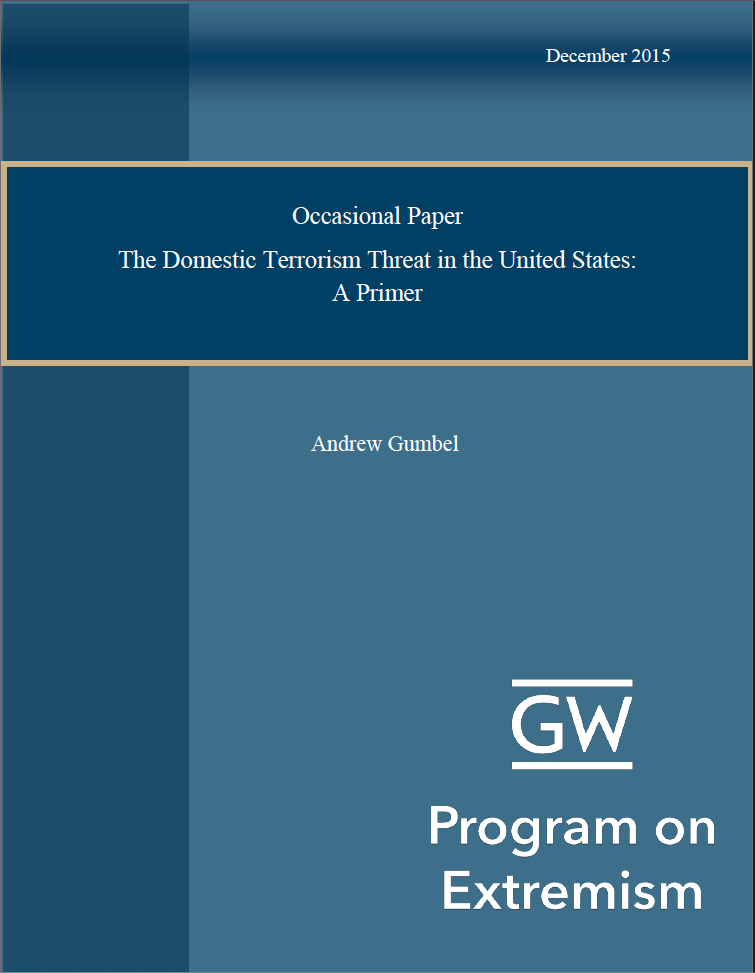Since September 11, 2001, the threat of violence inspired by radical right-wing ideologies has been largely overshadowed by the “war on terror” and the extraordinary effort expended by both the Bush and the Obama administrations to thwart attacks by jihadists inspired by al Qaeda, the Islamic State of Iraq and Syria (ISIS), and other militant Islamist groups.
Now, however, policymakers and analysts both within and outside of government are questioning whether the balance of priorities should shift in the wake of a spate of high-profile attacks by white supremacists and similar extremists—most notably the June 2015 shooting at a historic African American church in Charleston, South Carolina, which killed nine people and prompted lawmakers to vote for the removal of the confederate flag from the statehouse grounds.
In October 2015, at an event hosted by the Program on Extremism, Assistant Attorney General for National Security John Carlin announced the creation of the post of Domestic Terrorism Counsel to coordinate cases arising from right-wing extremism, an acknowledgment that extremists weaned on radical homegrown, right-wing ideologies have killed more people in the U.S. since 9/11 than jihadis.
Aside from the Charleston shooting, the more alarming recent attacks include:
- The April 2014 killing of three people outside a Jewish Community Center in Overland Park, Kansas, by a well-known white supremacist. The assailant, Glenn Miller, gave the jury a Nazi salute after he was convicted, saying that he looked forward to dying as a martyr; he is awaiting final sentencing following a recommendation of capital punishment from the jury.
- A June 2014 killing spree in Las Vegas in which a young couple, Jerad and Amanda Miller, shot two police officers and a bystander before turning their weapons on themselves. The Millers had previously spent time at Cliven Bundy’s Nevada ranch during Bundy’s standoff with federal officials over unpaid grazing fees.
- A former Transportation and Safety Administration employee’s June 2014 attempt to storm a courthouse in Cumming, Georgia, and take officials and employees hostage with an arsenal of guns, explosives, and smoke grenades. The attempt failed when sheriff’s deputies spotted him driving his car onto a sidewalk outside the courthouse. The former TSA employee was killed following a three-minute shoot-out with the sheriff’s deputies.
The immediate risk factors that give rise to such violence were largely identified by a 2009 Department of Homeland Security report pointing to the pressures of a depressed economy, the racial animus triggered by the election of the country’s first African American president, the fear—justified or otherwise—of legislation to restrict access to firearms and ammunition, and the large number of disaffected, highly skilled military veterans returning home from the wars in Iraq and Afghanistan, some of whom are attracted to and willing to act on extremist ideologies. The validity of these findings remained unaffected by the political firestorm that the report provoked and the decision to withdraw it under pressure from outraged conservative members of Congress.
The economic collapse of 2008 and the election of Barack Obama gave rise to a spike in the number of hate groups around the country. The Southern Poverty Law Center counted more than 1,000 of them in 2011 and 2012; this number is now around 780. Most hate groups deal solely in violent rhetoric, not actual violence. However, it is clear these groups provide the background chatter that can provoke individuals to commit violent acts—much as they did in the 1990s at the height of the militia movement.
Unlike the 1990s, when the perceived threat was from small, well-organized groups like the Aryan Republican Army—which robbed 22 banks across the Midwest, or tight-knit radical communities like the Montana Freemen and Elohim City in eastern Oklahoma, many of the more recent confrontations and attacks have been sparked by lone individuals whose political zeal has often been offset by questions about their mental stability. Dylann Roof, the suspected perpetrator of the Charleston shootings, is a case in point: it is not clear if the racist ideologies he absorbed via the Internet fed a pre-existing mental disturbance and inclination toward violence, or if he was radicalized and acted, as has been alleged, out of a carefully considered desire to contribute to a broader cause.
Some analysts believe the proliferation of mass killings perpetrated by individuals of uncertain mental competency represents a new threat separate from the particular ideology—jihadist, white supremacist, or other—that fuels their actions. Others, by contrast, see a continuum between the more familiar radical movements of previous generations and the violence that has erupted more recently in their name. This briefing paper restricts itself to an analysis of the history, ideology, and evolving methods of the radical far right in the United States; it is for others to determine how each attack fits into or deviates from pre-existing patterns.


